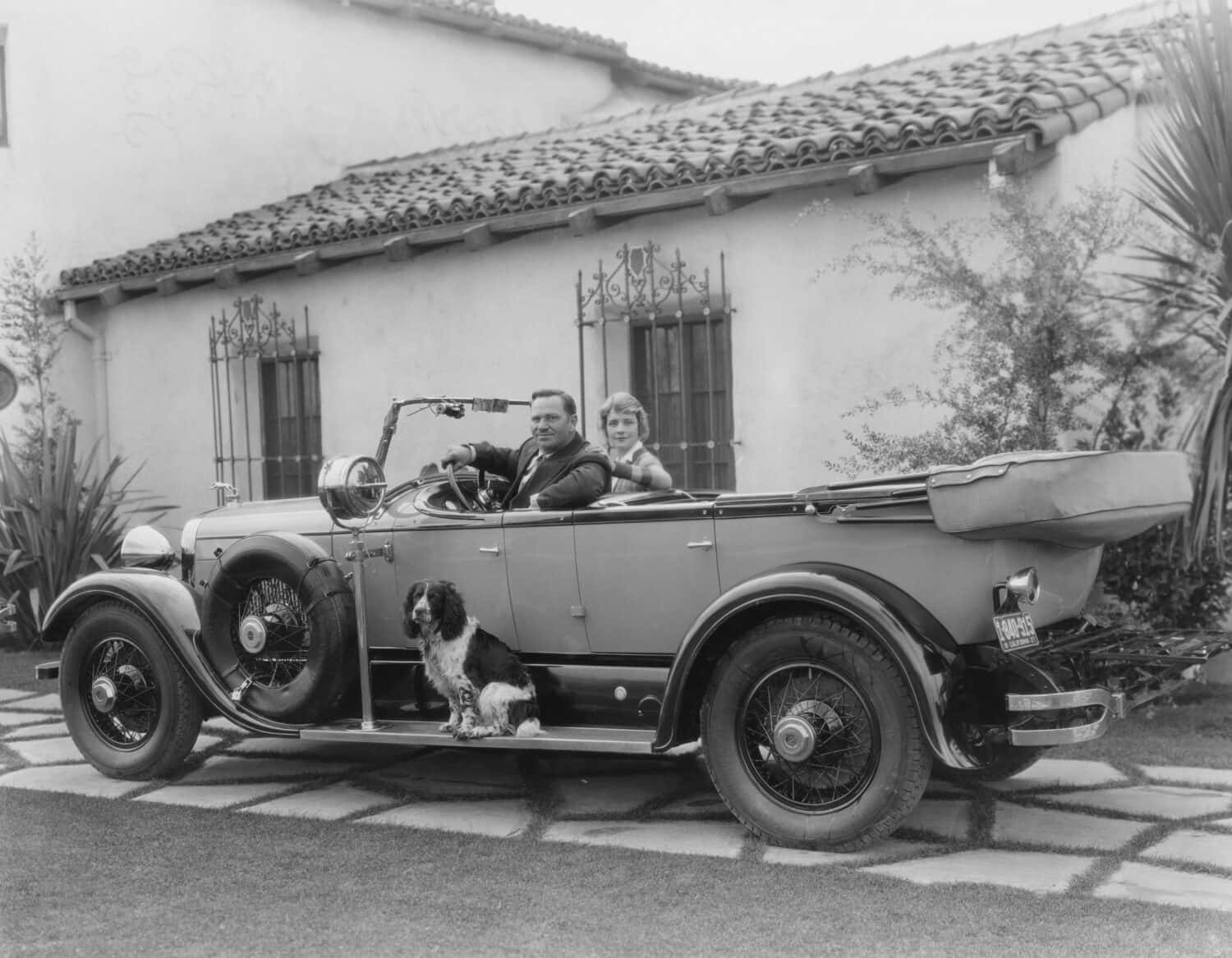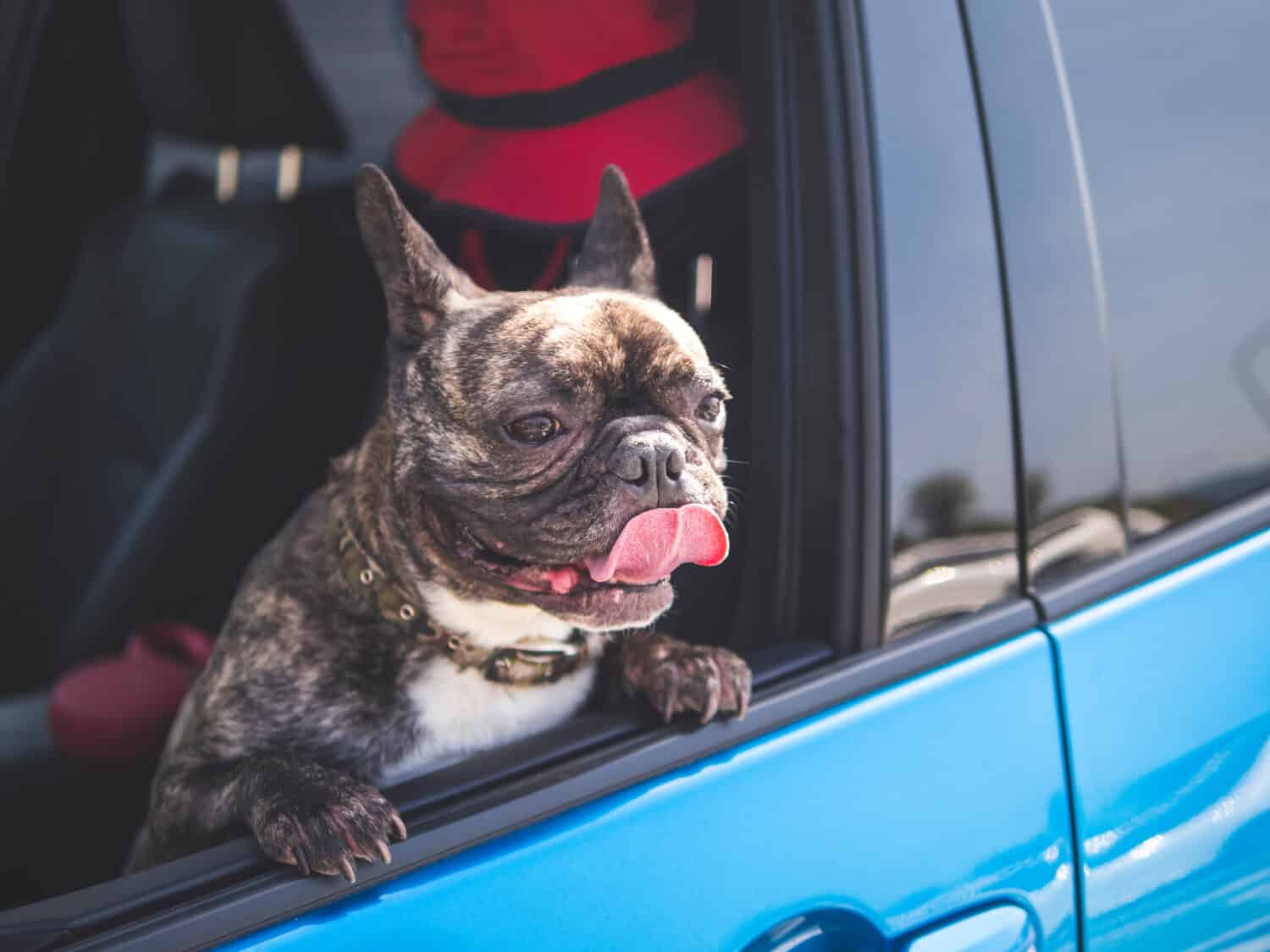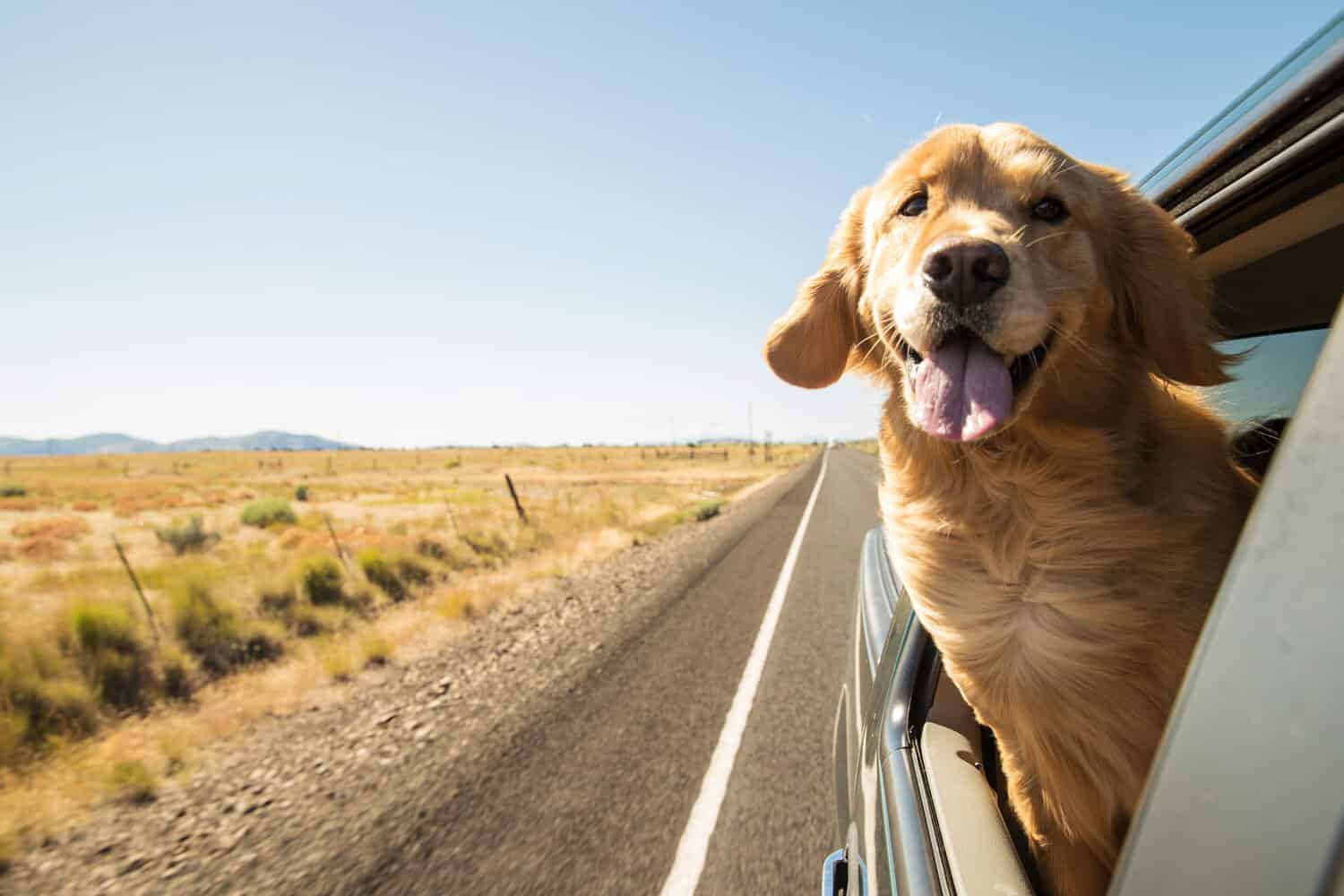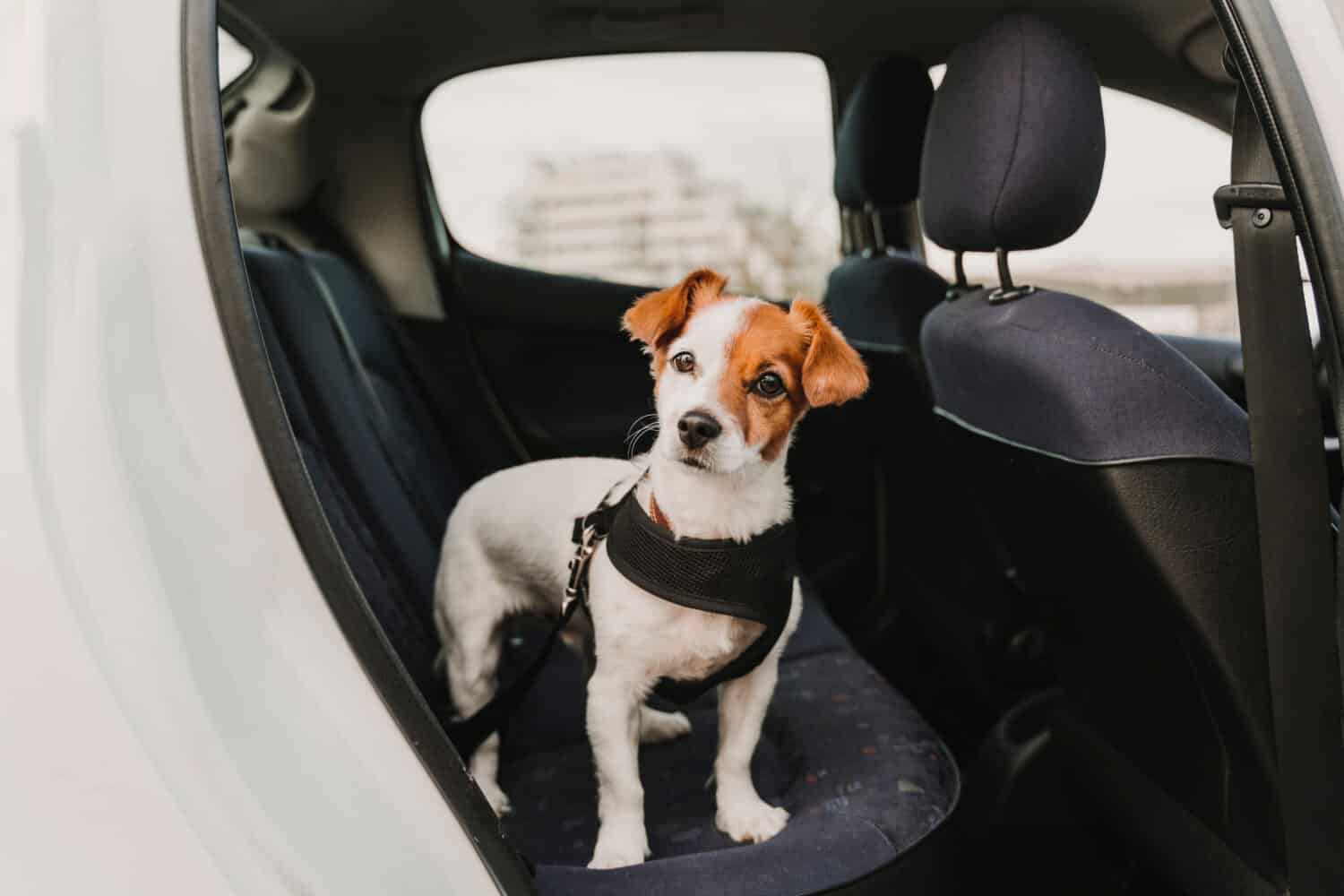Is your dog a frequent co-pilot?
If so, you’re not alone. A 2011 study found that over half of American dog owners often take their pups along in the car. But what if you need to run into a store or make a stop where your furry friend isn’t welcome to enter with you? Can your buddy be left alone in the car?
Currently, 31 states have laws covering companion animals left alone in “unattended vehicles.” Some states will also allow “any person” to rescue an animal in danger without facing civil or criminal liability resulting from damage to the car.
Hopefully, all responsible pet parents know that temperatures in a car can rise to dangerous levels quickly. And it doesn’t even have to be a hot day for that to happen.
But what if you crack a window, or leave it fully open? What about cooler fall and winter days? Is there any time when it’s safe — or even legal — to leave your dog alone in a vehicle?
Here are the general “rules of the road” every dog lover needs to know before taking his or her pet along for the ride.
Canines and Cars over the Decades
The desire to bring a canine family member along on a car trip is nothing new.

The “Bird Dog Palace” was attached to a car’s running board (where the pup is sitting in this vintage photo) and advertised as a way to safely travel with your dog.
©Everett Collection/Shutterstock.com
The 1930s was a time of some bizarre inventions for traveling dog owners. The most popular was the “Bird Dog Palace.” That was a metal cage that came in two sizes. It was attached to the outside of the car on the driver’s side running board.
An even worse way to contain your canine companion in those days was the “Dog Sack.” Just as it sounds, this was a “sack” attached to an open window and the running board. But not to worry, it featured a hole for the head!
Fast forward to 2019, when Tesla released its “Dog Mode” feature. By this time, of course, pups were no longer banished to running boards.
The Tesla feature allows the driver to set a temperature for the inside cabin, which draws off the battery. There’s a notice on the car’s touchscreen advising those passing by what the inside temperature is and that the dog’s driver is returning soon. The feature, which initially had some potentially fatal flaws, has been tweaked over the years. But it’s still subject to the car’s battery life and any malfunctions.
The Hot and the Cold of It
As the Humane Society of the United States says, “Cool outside doesn’t mean cool in the car.”
Even if it’s a comfy 72 degrees Fahrenheit outside, the inside cabin of a car can zoom up to 116 degrees in less than an hour. A warm summer day of 80 degrees Fahrenheit can heat up to nearly 100 degrees in just 10 short minutes.

Temps inside a parked car can heat up to dangerous levels fast, even if it’s not that hot outside.
©The Adaptive/Shutterstock.com
As many dogs react to being left in a car by jumping and barking, they can risk heat stroke even before the temperature rises to dangerous levels. Putting the windows down, even fully, has been found to have no substantial effect on the inside vehicle temperature.
As for colder, winter weather, things can be just as risky for your dog as in the summer.
Car cabins chill quickly. If your pup is not used to cold temps, hypothermia is as big a risk as heat stroke.
Dognapping Dangers
Despite a locked door, having your best buddy dognapped out of your vehicle is also a very real risk.
Sad statistics show that two million dogs are stolen each year in the U.S. Many are snatched from unattended cars. Even worse, only 20 percent of those stolen canines make it back to their owners.

French bulldogs rank first as the breed most often targeted by dog thieves.
©Lee waranyu/Shutterstock.com
Regardless of how fast you think that errand will be, thieves can work even faster. And if your dog is in the top ten of pups that are most frequently targeted by canine crooks, such as the French bulldog and Yorkshire terrier, the odds of its being abducted rise substantially.
In essence, there is no truly safe way to leave your dog alone in a vehicle.
Is It Illegal to Leave an Animal Unattended in a Vehicle?
State laws regarding leaving animals in parked cars are a patchwork of different definitions and penalties.
Some states give liability protection to those who attempt to rescue an animal from a car. Other states, such as New Jersey don’t, but consider leaving a pet “under dangerous conditions” to be a crime punishable by a fine of at least $500.
In California leaving “an animal” alone in a car under “conditions that endanger” its health or well-being is punishable by a fine of $100. Such endangerment can include lack of ventilation, food or water, or other potentially hazardous “circumstances.” If the animal suffers a “great bodily injury” the fine goes up to $500 along with possible imprisonment.
In Colorado, an “animal” is defined as a cat or dog, and “cruelty” is described as confining the animal in a vehicle “in a cruel or reckless manner.” Colorado also provides immunity from property damage stemming from a good Samaritan forcibly entering a vehicle to rescue an animal.

There are numerous risks in allowing your dog to ride with his head out an open car window.
©MPH Photos/Shutterstock.com
Florida law defines “domestic animals” as dogs, cats, or other animals that are kept as household pets. That state also provides liability immunity for damages in the rescue of a pet from a vehicle.
While these laws vary from state to state, even without specific rules on the books, animal cruelty statutes would apply under certain circumstances.
Michigan State University recently compiled a robust list of state laws regarding animals left alone in vehicles, available here.
Travels with Fido
Although bringing your dog along in the car, whether it’s your vacation road trip or just in the neighborhood has its challenges, there are easy ways to make the journey a safer one.
While we would never put an infant or toddler unrestrained in a vehicle, it’s common to see pups traveling while hanging out the window or sitting on the driver’s lap. While it’s nice to have the wind in your ears, that’s a potentially dangerous way for them to travel.
And despite funny videos showing cats traveling calmly in vehicles, felines are easily spooked and should always be in a carrier when in the car.

Using a pet seat belt for your dog has many advantages.
©eva_blanco/Shutterstock.com
Driver distraction is another problem. Simply putting your dog into the car without a “seat belt” often leads to canine shenanigans that can take your attention off the road. In three states that’s against the law.
New Jersey, for example, requires that all pets in the passenger compartment be restrained with a seat belt or in a carrier. Rhode Island has a similar law, but it allows a passenger to be in “control” of the dog. Hawaii has two types of fines, one for driving with a dog in your lap, and the other for having a loose pet in your car.
Dog Seat Belts
Doggie seat belts range in cost from $10 to “crash-tested” harnesses for over $100 and every price in between. Unlike child car seats, there are no federal standards for dog restraints.
In the absence of any such specifications, the safest one will be the one that fits the best. And never let your buddy ride in the front seat, even with a seat belt. Just as the back seat is best for young children, the same applies to your dog. As for bigger breeds, the front seat is even more dangerous. If a front-seat passenger is over 70 pounds, the airbags will deploy during a front-end crash. That force can be fatal to a dog, even a large one.

Taking a road trip with your canine family members is certainly more fun, and only requires some common-sense planning.
©Christine Bird/Shutterstock.com
Dog car restraints go on just like a walking harness and attach to a short lead that connects to the seat belt. Such preventative measures can also prevent your best friend from escaping from the car after an accident. Make sure to use the window lock too, as canine paws are just right for putting windows down unexpectedly.
Of course, the best way to travel with any pet is to not go without another human along. Being able to stop for food or to use the restroom is going to be part of any long journey. Having a human traveling companion means your pup won’t risk being left alone in your car, even if it’s just for a short time.
The photo featured at the top of this post is © dezy/Shutterstock.com
Ready to discover the top 10 cutest dog breeds in the entire world?
How about the fastest dogs, the largest dogs and those that are -- quite frankly -- just the kindest dogs on the planet? Each day, AZ Animals sends out lists just like this to our thousands of email subscribers. And the best part? It's FREE. Join today by entering your email below.
Thank you for reading! Have some feedback for us? Contact the AZ Animals editorial team.







